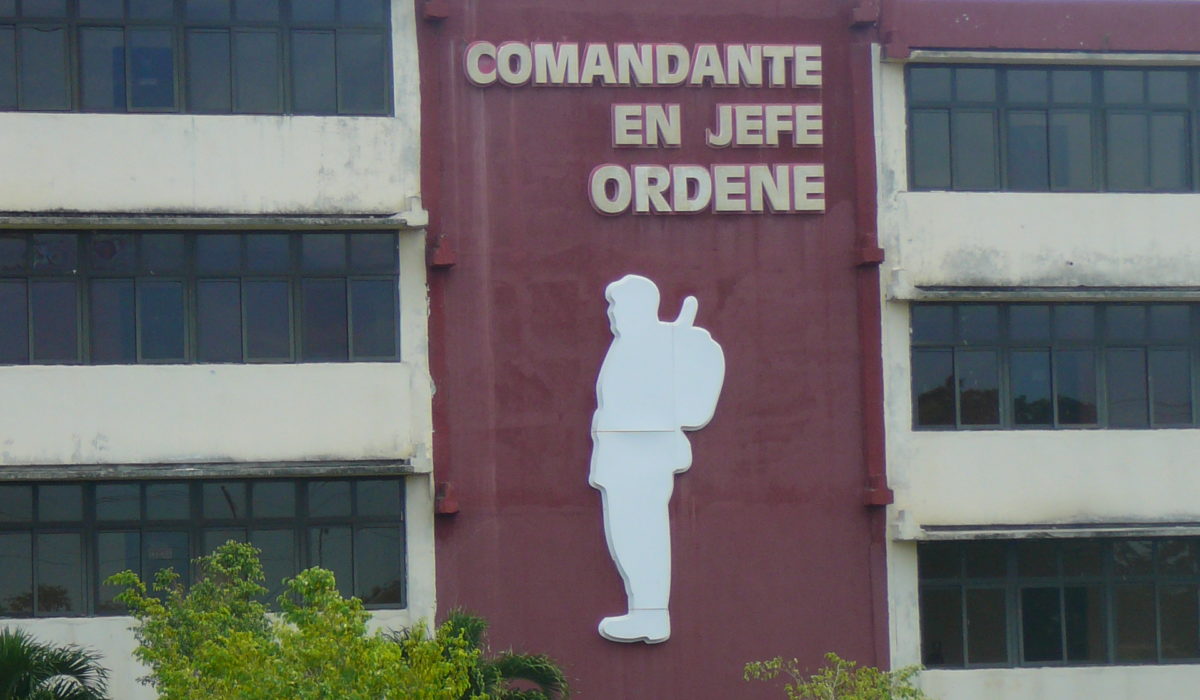El Museo
I asked at the reception and was told the museum is open every day from ten to five. I went one morning only to find it closed and after a second failed attempt a few days later, I complained. After a couple of phone calls, the receptionist assured me that somebody will be there. I have a feeling that not a single person – staff or visitor, has set foot in it in a long time.
Third time lucky, we are greeted by a woman who doesn’t speak a word of English and follows us around without offering to explain anything. Not that there’s much to explain. One of the ugliest but situated on top of the hill overlooking a long stretch of the beach, this is the house in which Che stayed in the first months of ’59 and again a few months later for a honeymoon after marrying Aleida March. In one of the rooms there is a small desk with a typewriter which he supposedly used for his writings. There is no other furniture in the room, only a few blown up, plaque mounted photographs on one wall – of Che and some other revolutionaries. The typewriter on the desk is a portable Remington but on one of the photographs he is sitting behind a much larger Underwood. So much for historical accuracy! The other three rooms are not even worth mentioning – photographs of the Chernobyl nuclear plant, a couple of dolls dressed in Ukrainian traditional clothes, a few artifacts from China and Venezuela. Not a single photograph or a plan of what Tarará looked like before the Revolution, only one very grainy unlabeled photograph of Mr. Webster, obviously blown up from a group photo. If I hadn’t done a bit of research before coming here, I could have easily concluded that this whole place was built after the Revolution.
We leave the “museum” disappointed, but I should have known better. Even my fifteen year old daughter tells me: “Really mom, what did you expect?” I realize I will probably never know which house belonged to Mr. Webster and his family or who owned La Casa Verde. And I am, once again, reminded of what collective memory loss looks like, after more than half a century of reshaping history, like a plasticine figurine stretched or added to as necessary. It’s not really that important if I never find out more about the history of Tarará and its pre – revolutionary inhabitants, what bothers me more than anything is that it seems that nobody cares. It’s almost like the first half of the 20th century never occurred in Cuba, at least judging by the museums and the knowledge, or lack of it, of ordinary people. Just a few days ago I finished reading Leonardo Padura’s book “Havana Red” and I remember a passage that describes what I’m thinking right now much better than I could ever write it myself:
“…because memory loss is one of this country’s psychological qualities. It’s a self – defense mechanism employed by many people. Everybody forgets everything and they always say you can start afresh, this very minute: the past has been exorcised. If memory doesn’t exist, there’s no blame, and if there’s no blame, no need to forgive, you see the logic? And I understand, of course I understand, because this island’s historical mission is always to be starting afresh, to make a new beginning every thirty or forty years, and oblivion is usually the ointment for all the wounds which are still open…”
So there, joke’s on me.
